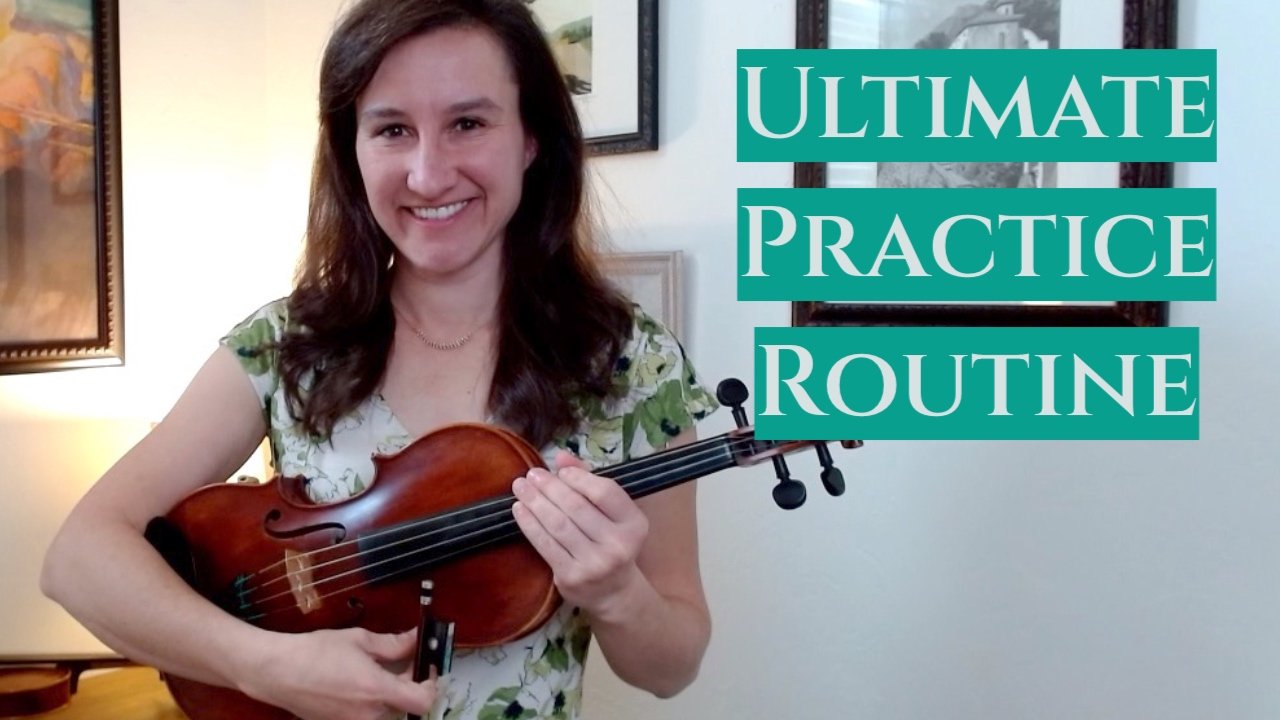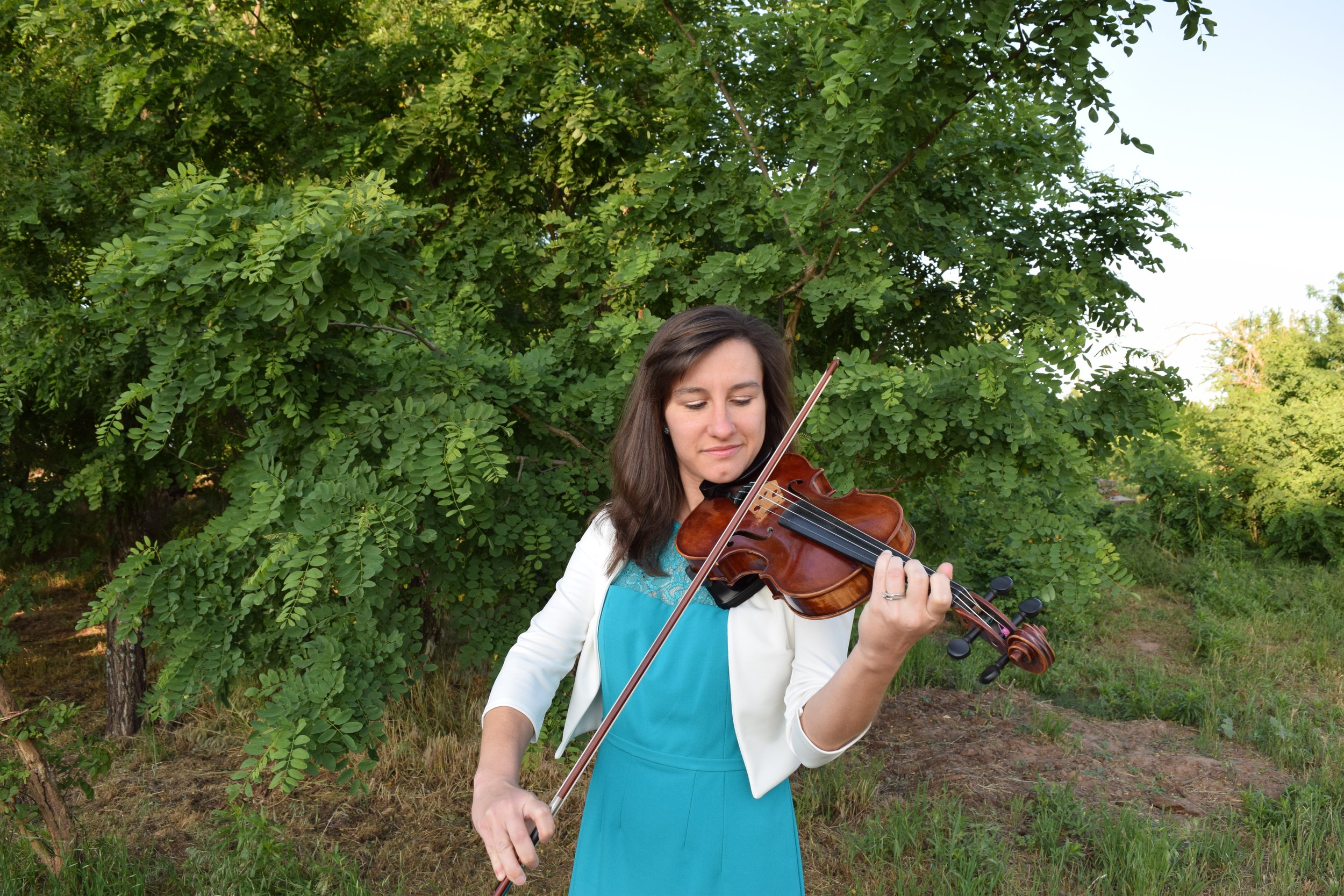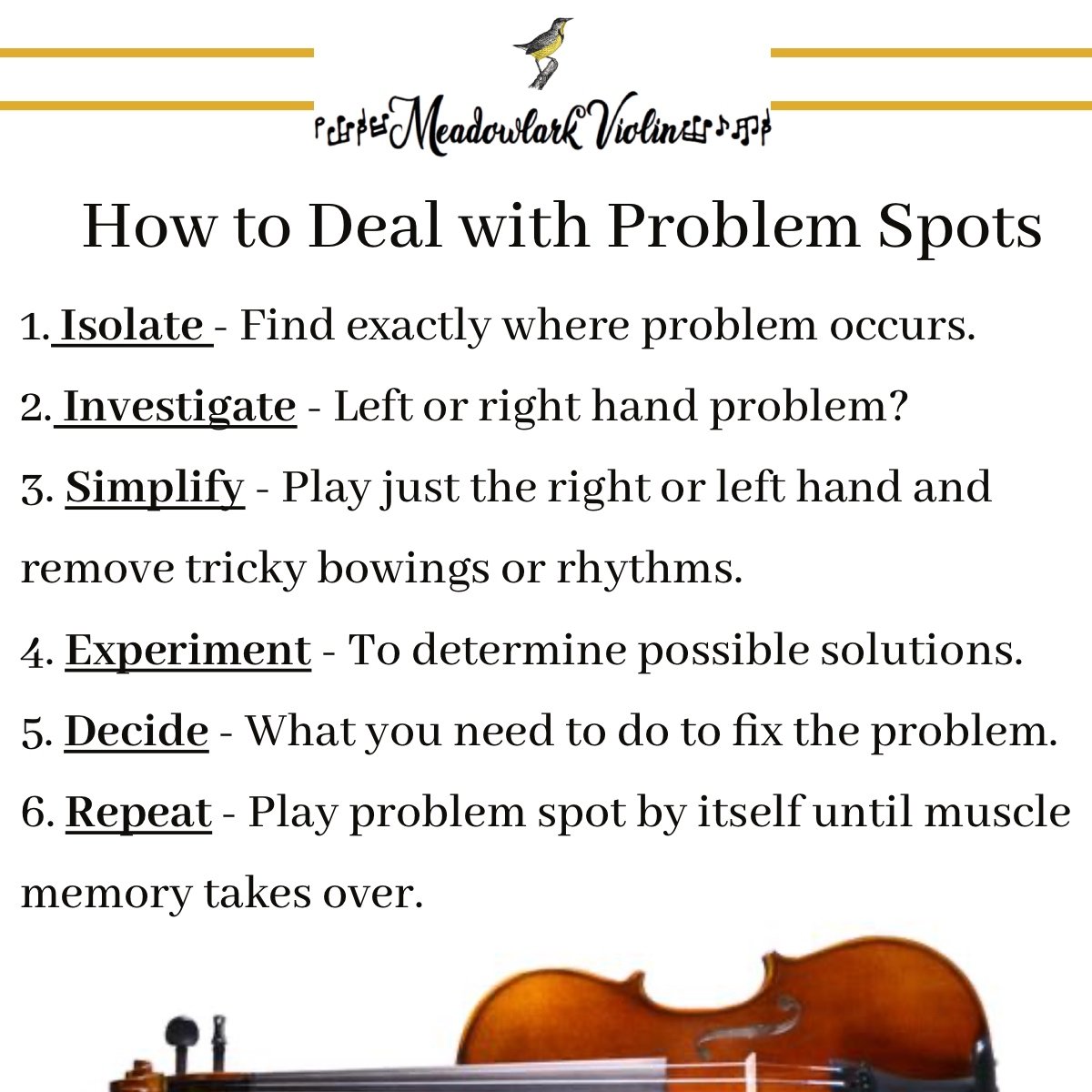How to Practice the Violin in 8 Steps: Ultimate Practice Routine
/Practicing violin is a skill, just like learning to play in tune is a skill. You have to practice practicing! Once you learn how to practice violin the right way, you’ll be able to make more progress in less amount of time. That means you’ll have more violin practice time to devote to other areas.
I’ve tried many practice routines for violin, but I’ve decided this structure is the best practice routine for maximum results and progress. These 8 practice steps are what I do every day!
Ultimate Violin Practice Routine for the Best Results
You want to make sure you are getting the most out of your practice time with the violin, but more importantly, you want to make sure that you aren’t reinforcing bad habits while you practice.
One reason many beginner violin students get frustrated with the violin is that they can’t ever tell they are making progress. This problem is fixed by getting a practice routine and sticking with it. By practicing the same things everyday and sticking with a routine, you’ll be able to see progress every single day. If you jump around and never practice the same scale, exercise, or song more than a few days, you never truly master any skill or song, and therefore you can never tell if you are making any progress. So if you want to know how to practice violin the right way, here’s what I’ve learned after playing violin for over two decades!
Start With Stretches
Stretches are so important to practicing violin the right way. Stretches get your muscles warmed-up and ready to play. They also help you to relax and will help you to avoid tension while you’re playing.
I start by stretching large muscles, like my back, my shoulders, and my arms. Then I stretch smaller muscles, like my neck and wrists. Finally I stretch my fingers and hands. Now you’re ready to pick up your violin and practice!
2. Warm-Ups
During your warm-up period, you are focusing on warming-up each hand separately. Don’t try to combine hands yet! I don’t start playing scales until I’ve done several minutes of warm-ups.
Warm-ups for the violin include things like playing long bows on open strings and doing slides for the left hand. This is also a great time to incorporate some experimenting into your practice time (I’ll talk about that later).
If you need some ideas for warm-ups, watch my 5 Essential Warm-Ups for the Violin.
3. Scales
Scales are absolutely crucial to making progress on the violin. I can’t stress this enough. I know because after I graduated from college, I thought I would cut out scales for a few weeks. (It was my first time in a decade I didn’t have regular weekly lessons with an instructor so I was trying to spread my wings). That experiment didn’t end well. After two weeks of playing scales on and off, I could tell my playing was really suffering. My fingers weren’t hitting the strings precisely, nor where they quickly adjusting to being in tune. Back to scales!
Scales should never be boring. They offer a blank slate to incorporate all of those various tricky passages in your solo pieces. Experiment with your scales and watch your progress soar!
Want a free violin scale book? Sign up below and get my free violin scale book, Creative Scales for the Experimental Violinist!
4. Etudes/Exercises
What are etudes? They are like a mix between a song and a scale. They are usually shorter compositions that focus on one technique element, like trills, 4th finger, or slurred bowings. The options are endless when it comes to etudes.
If you’re not currently playing etudes, this would be the time where I would practice exercises from your method book, or tetrachords.
5. Solo Pieces
Next up in our ultimate practice routine for the violin, your solo piece! Now it might be tempting to just play through your solo piece from the beginning, but this isn’t always the best way to approach practicing. Start with the problem spots while your focus is fresh. Don’t just repeat the tricky spots, be a detective. Try to determine if it’s a left or right hand issue. Simplify the tricky measure as much as possible. Take out tricky bowings or rhythms. Once you’ve isolated the exact problem, play it correctly several times until you start to feel muscle memory taking over.
Then start at the beginning and work your way through the rest of the piece!
It’s tempting to have a lot of solo pieces you’re working on. There are so many great pieces for classical violin and for fiddle that it’s easy to get distracted always playing new songs. But this means you’re spreading out your practice time and never really mastering any one song. My general rule is a max of 2 songs that are your main focus songs. You can have songs that you are polishing or songs that you always play as well. But for new songs, try to keep your practice time focused on one or two songs.
6. End on a High Note
You’re not done practicing quite yet! End your practice time playing something you love. Maybe an easy song you’ve already learned or a measure you do particularly well. It’s important to end your practicing feeling good about what you’ve accomplished. That will make you excited about practicing the violin again!
7. Experiment
Okay, that was the structured part of your violin practice routine. Now it’s time to experiment. Save a special time during or after your regular practice routine to add in some experimenting.
Your experimental time has no structure, no goals, no expectations. Feel free to experiment playing way up high, try doing dynamics with your bow, or pick out a song by ear. Experimenting is crucial to your progress as a violinists but we violin teachers rarely talk about it. Why? It’s hard to teach and it’s impossible to critique! That’s also the beauty of it. So make sure you take time out of your practice routine to experiment!
8. Don’t Practice All At Once
Don’t feel like you have to fit all of these items into one practice session. In fact, it’s best if you split it up. Do your stretches, warm-ups, and scales in one practice session, then take a break and do the rest. Maybe have an entire practice session where you just review old songs or another practice session dedicated entirely to experimenting. Taking breaks will keep you fresh and focused. Before you start practicing after a break longer than an hour, do some type of abbreviated warm-up and stretches. Maybe do some open strings and a scale just to get your fingers and muscles limbered up again.
How Often Should I Practice Violin?
Practice every day. Shorter segments are better than massive practice marathons where you are more likely to loose focus. Don’t feel like you have to do this practice routine all at once. Feel free to split it up, but always start each new practice session with a warm-up or scale. It’s hard to start playing cold!
While it’s important to practice every day, it’s also important to take at least one day off a week. This allows you to refresh and come back the next day ready to practice again!
Use your off day to listen to more music or just relax and go for a walk! If you really want to practice on your off day, you can. But remember, whatever you do on your off day is a bonus!
I think once you implement this practicing strategy you’ll notice drastic improvement, better progress, and more joy from playing the violin! Write in the comments below and let me know how you practice!
Happy Practicing!
~Lora



















